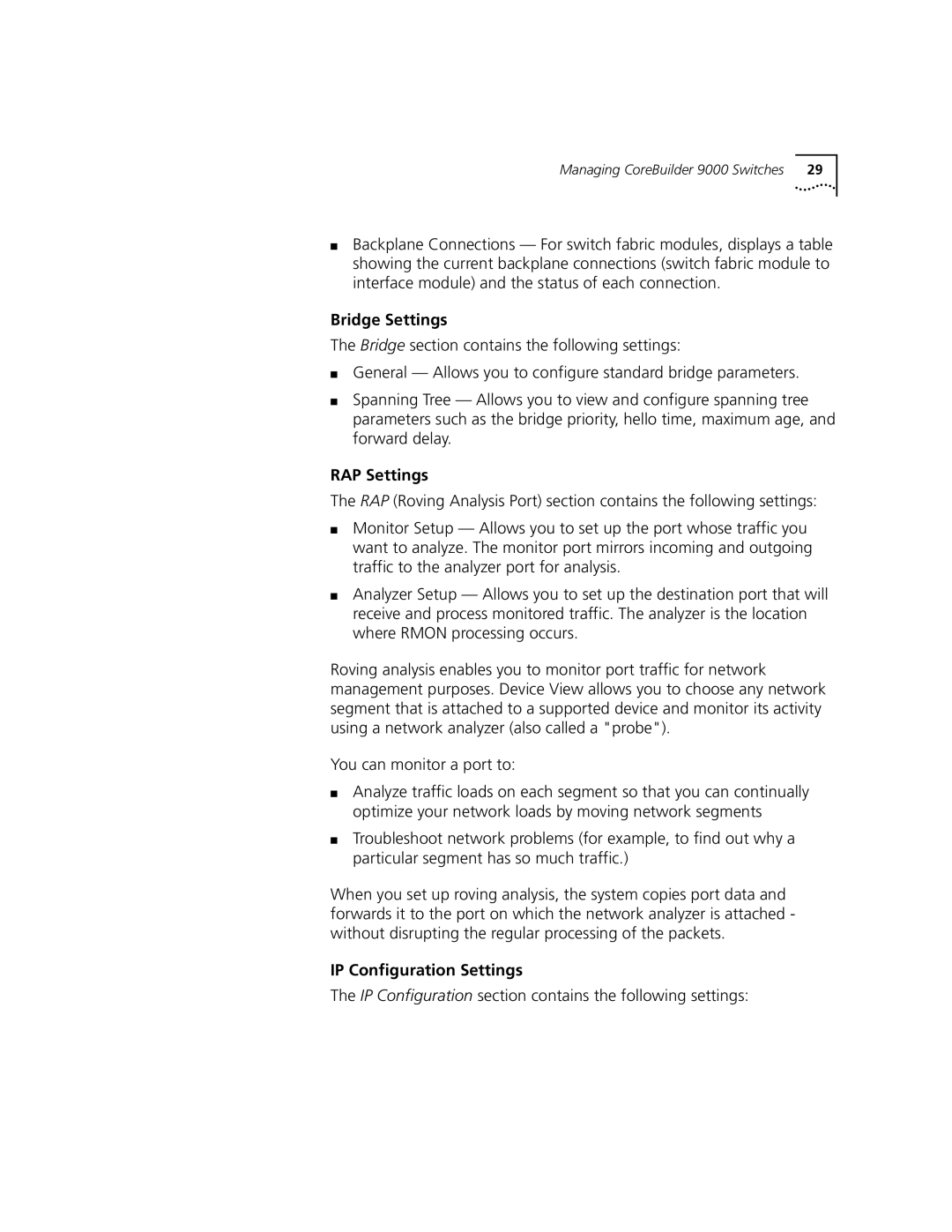Managing CoreBuilder 9000 Switches 29
■Backplane Connections — For switch fabric modules, displays a table showing the current backplane connections (switch fabric module to interface module) and the status of each connection.
Bridge Settings
The Bridge section contains the following settings:
■General — Allows you to configure standard bridge parameters.
■Spanning Tree — Allows you to view and configure spanning tree parameters such as the bridge priority, hello time, maximum age, and forward delay.
RAP Settings
The RAP (Roving Analysis Port) section contains the following settings:
■Monitor Setup — Allows you to set up the port whose traffic you want to analyze. The monitor port mirrors incoming and outgoing traffic to the analyzer port for analysis.
■Analyzer Setup — Allows you to set up the destination port that will receive and process monitored traffic. The analyzer is the location where RMON processing occurs.
Roving analysis enables you to monitor port traffic for network management purposes. Device View allows you to choose any network segment that is attached to a supported device and monitor its activity using a network analyzer (also called a "probe").
You can monitor a port to:
■Analyze traffic loads on each segment so that you can continually optimize your network loads by moving network segments
■Troubleshoot network problems (for example, to find out why a particular segment has so much traffic.)
When you set up roving analysis, the system copies port data and forwards it to the port on which the network analyzer is attached - without disrupting the regular processing of the packets.
